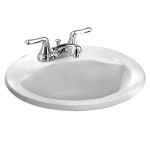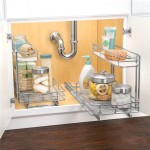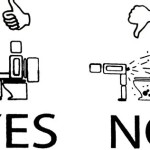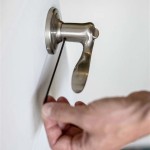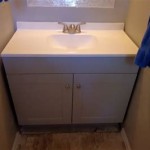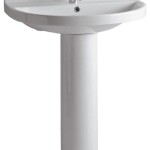Why Are There Mirrors in Bathrooms?
The presence of a mirror in a bathroom is so ubiquitous that it might seem like a given. But have you ever stopped to ponder why this particular fixture is considered an essential element of the bathroom space? The answer goes beyond simple vanity, delving into practical, historical, and even psychological factors. This article will explore the multifaceted reasons why mirrors hold such a prominent position in bathrooms.
Functionality and Hygiene
The most basic and arguably the most significant reason for mirrors in bathrooms is their role in facilitating personal hygiene. The ability to see oneself clearly is crucial for tasks such as:
- Shaving: A mirror allows for precise control when shaving, ensuring a clean and even shave.
- Brushing teeth and flossing: Observing oneself while brushing and flossing helps to ensure a thorough and effective cleaning process.
- Applying makeup: Mirrors are indispensable for applying makeup accurately and achieving desired looks.
- Washing hair: Checking for cleanliness and proper rinsing while washing hair is important.
- Contact lens insertion and removal: A clear view is essential for handling delicate contact lenses.
These tasks are made significantly more challenging without a mirror, highlighting its crucial role in maintaining personal hygiene and grooming.
Psychological Impact and Space Illusion
Beyond practical function, mirrors also have a psychological impact on bathroom design and user experience. Mirrors can significantly influence the perceived size and ambiance of a space. By reflecting light and creating the illusion of additional depth, mirrors can make a small bathroom feel more spacious and airy. This effect is particularly valuable in compact bathroom spaces, where maximizing the sense of openness is crucial.
The Historical Context of Bathroom Mirrors
The history of mirrors in bathrooms is intertwined with the evolution of bathroom design itself. In ancient times, bathrooms were often communal spaces, and mirrors were not a common feature. It was not until the rise of private bathrooms, particularly in the Victorian era, that mirrors began to be incorporated as a standard fixture. This shift was fueled by the increasing emphasis on personal hygiene and grooming, as well as evolving notions of privacy and self-awareness.
Early bathroom mirrors were often simple and functional, but over time, they became more elaborate and decorative, reflecting changing trends in interior design. The introduction of electricity in the 20th century further revolutionized bathroom mirrors, leading to the development of lighted mirrors and vanity units that integrated mirrors with storage and lighting systems.
In conclusion, the presence of mirrors in bathrooms reflects a complex interplay of practicality, psychological factors, and historical trends. Their ability to facilitate hygiene, enhance the perceived space, and cater to personal reflection solidified their status as an indispensable fixture in modern bathroom design.

Why You Shouldn T Use Regular Mirrors In Bathrooms
Advantages Of Using Mirrors In The Bathroom

Why Bathroom Mirrors Are So Important

What Happened To The Mirrors In Our Bathrooms Shark
Tips For Using Mirrors In Bathroom To Enlarge The Space

4 Hints Every Small Bathroom Needs Roomhints

Rock Your Reno With These 11 Bathroom Mirror Ideas

Backlit Vs Lighted Mirrors What S The Difference Ledmyplace

Bathroom And Vanity Mirrors West Elm

4 Hints Every Small Bathroom Needs Roomhints
Related Posts
